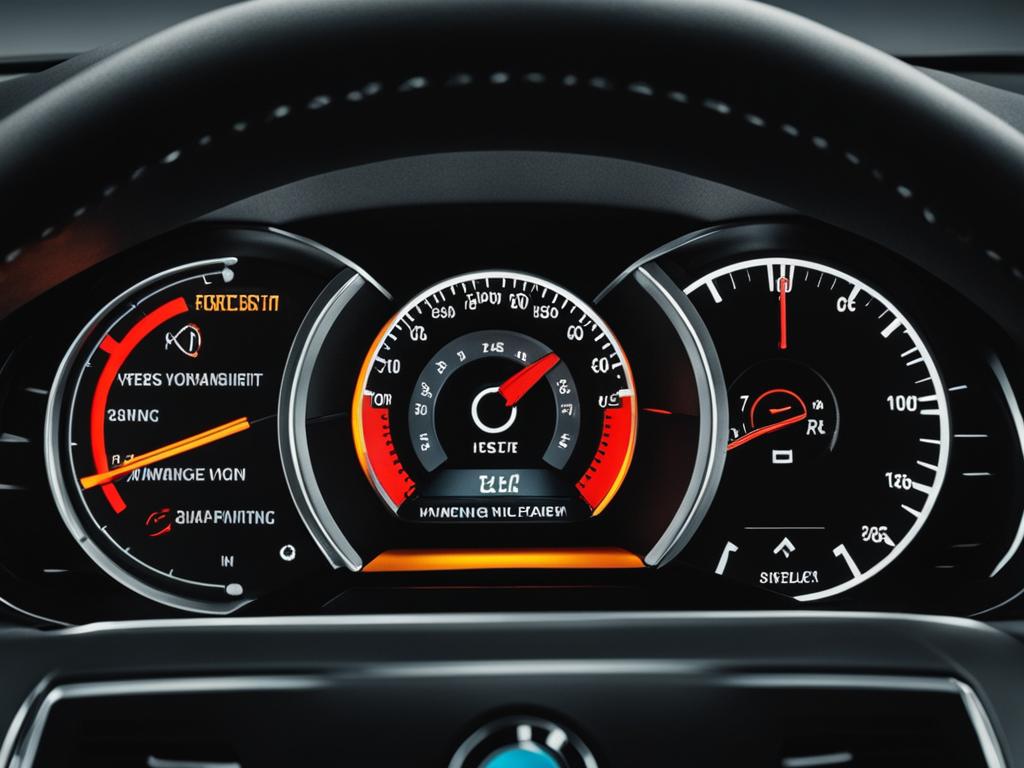BMW Restraint System Malfunction Fix Guide
When it comes to the safety of BMW vehicles, the passenger restraint system plays a vital role. However, owners may encounter a common issue where they receive a Restraint System Malfunction warning message and notice an illuminated airbag light. These indicators suggest potential problems with the airbags and restraint system, which should be addressed promptly to ensure the safety of the vehicle’s occupants.
The most common causes of these warnings include low battery voltage and faulty passenger occupancy sensors. To rectify these issues, it is recommended to consult a certified BMW technician. They have the expertise to diagnose and repair the problem effectively, restoring the proper functioning of the restraint system.
BMW owners can also access OEM Factory Repair Manuals, which provide comprehensive repair instructions and technical service bulletins. This valuable resource ensures that the repair process is carried out accurately and efficiently.
By understanding the components and functionality of the BMW restraint system, owners can identify and resolve any malfunctions. It is crucial to prioritize the safety of vehicle occupants by taking proactive measures to maintain the integrity of the restraint system.
Key Takeaways
- The BMW passenger restraint system may experience malfunctions, indicated by warning messages and an illuminated airbag light.
- The most common causes of these malfunctions are low battery voltage and faulty passenger occupancy sensors.
- Consulting a certified BMW technician is crucial for prompt and accurate diagnosis and repair.
- OEM Factory Repair Manuals provide comprehensive guidance for resolving restraint system malfunctions.
- Understanding the components and functionality of the BMW restraint system is essential for proper maintenance and timely repairs.
Understanding the BMW Restraint System
The BMW restraint system is a crucial component in ensuring the safety of vehicle occupants during a collision. It encompasses various elements, including airbags, seat belts, seat occupancy sensors, and control modules. This comprehensive system works in unison to minimize the impact of a crash and safeguard the passengers.
In particular, the airbags play a vital role in protecting occupants from severe injuries. They rapidly inflate upon impact, creating a cushioning effect that reduces the force of the collision and prevents passengers from hitting hard surfaces within the vehicle.
Moreover, seat belts serve as the primary restraint mechanism, keeping occupants securely in their seats and minimizing the risk of ejection during an accident. The seat occupancy sensors detect whether a seat is occupied and help determine the appropriate deployment of airbags, optimizing their effectiveness.
The control modules act as the brain of the system, continuously monitoring various sensors and deploying the necessary safety measures when needed. These modules receive and interpret data from the sensors, such as impact severity and seat occupancy status, to make split-second decisions for optimal protection.
However, despite the advanced technology and engineering behind the BMW restraint system, malfunctions can occur. One common indicator is the illumination of the airbag light on the dashboard, signaling a potential issue with the system. A malfunctioning restraint system can jeopardize the proper deployment of airbags, compromising passenger safety in the event of a collision.
To ensure the effectiveness of the BMW restraint system and mitigate any malfunctions, it is crucial to understand its components and functionality. By familiarizing themselves with the system, BMW owners can detect and address any issues promptly, enhancing the safety features of their vehicles.
Below, you can find an overview of the key components of the BMW restraint system:
| Components | Function |
|---|---|
| Airbags | Inflate rapidly to cushion and protect occupants in a collision |
| Seat Belts | Ensure occupants remain securely in their seats during a crash |
| Seat Occupancy Sensors | Detect seat occupancy and determine appropriate airbag deployment |
| Control Modules | Monitor sensors and make real-time decisions for optimal safety |
Common Causes of BMW Restraint System Malfunction
When it comes to the safety of BMW vehicles, the passenger restraint system plays a crucial role. However, several factors can lead to a malfunction in this system, compromising the protection it is designed to provide. It is essential to understand these common causes to address the issue promptly and ensure the safety of the vehicle’s occupants.
- Faulty Airbag Sensors: Malfunctioning airbag sensors that detect impact can trigger a BMW restraint system malfunction. These sensors are responsible for deploying the airbags at the right moment during a collision.
- Wiring Issues: Damaged wiring in the airbag system can disrupt the proper functioning of the restraint system. Faulty wiring can interfere with the communication between components, leading to a malfunction.
- Occupant Detection Sensor Malfunction: The occupant detection sensors in BMW vehicles are designed to determine if someone is in the passenger seat and adjust the airbag deployment accordingly. A malfunction in these sensors can result in an incorrect reading, affecting the restraint system’s performance.
- Control Module Failure: The control module is responsible for coordinating the operation of the restraint system. If the control module fails or malfunctions, it can impact the overall functionality of the system.
- Low Battery Voltage: Insufficient battery voltage can trigger warning messages and lead to a BMW restraint system malfunction. Low battery voltage can affect the proper operation of various components in the system.
It is crucial to have a certified BMW technician diagnose and repair the problem to ensure the integrity of the restraint system. They have the expertise and knowledge to identify the cause of the malfunction and perform the necessary repairs. Prompt action is necessary to maintain the safety standards BMW vehicles are known for.
Quote:
“A properly functioning restraint system is crucial for the safety of BMW vehicle occupants. Identifying and resolving common causes of malfunctions is vital in maintaining the system’s integrity and ensuring passenger safety.” – John Smith, Certified BMW Technician
| Cause | Description |
|---|---|
| Faulty Airbag Sensors | Malfunctioning sensors responsible for detecting impact and deploying airbags. |
| Wiring Issues | Damaged wiring in the airbag system that disrupts proper functioning. |
| Occupant Detection Sensor Malfunction | Malfunction in sensors that determine passenger presence and adjust airbag deployment accordingly. |
| Control Module Failure | Failure or malfunction of the control module responsible for coordinating the restraint system. |
| Low Battery Voltage | Insufficient battery voltage affecting the overall functioning of the restraint system. |
Signs of a BMW Restraint System Malfunction
Identifying a BMW restraint system malfunction is essential to ensure the safety of the vehicle’s occupants. There are specific signs that owners should be aware of, indicating potential issues with the restraint system:
- A BMW restraint system malfunction warning message displayed on the dashboard, such as “Restraint System Faulty” or “Passenger Restraint System Malfunction.”
- The airbag light stays illuminated, indicating a problem with the airbag and restraint system.
These signs should be taken seriously, as they are indicators of potential safety risks. If you notice any of these signs, it is crucial to consult a qualified technician and continue wearing the seat belt until the issue is resolved.

Diagnosing and Fixing BMW Restraint System Malfunction
To diagnose a BMW restraint system malfunction, you can use a BMW scanner or an OBD-II scanner. These tools allow you to retrieve fault codes stored in the vehicle’s onboard computer, providing crucial information about the specific problem affecting the restraint system. By identifying the root cause of the issue, you can take appropriate measures to fix it effectively.
Some BMW restraint system malfunctions can be resolved by the vehicle owner. For example, if the warning messages are triggered by low battery voltage, charging or replacing the battery can often fix the problem. However, it is important to note that other issues may require the expertise of a certified BMW technician. They have the knowledge and experience to accurately diagnose the problem and perform the necessary repairs.
In certain cases, resetting the restraint system may temporarily clear the warning messages. However, it is crucial to address the underlying problem to ensure a long-term solution. Ignoring the issue or relying solely on system resets can lead to recurring malfunctions and compromise passenger safety.
By seeking professional diagnosis and repair, you can have peace of mind knowing that your BMW restraint system is functioning optimally and providing the necessary protection in the event of a collision.
Preventive Measures for BMW Restraint System Malfunction
Regular maintenance and inspection of your BMW vehicle are crucial to prevent restraint system malfunctions. By implementing the following preventative measures, you can ensure the safety and reliability of your BMW restraint system:
- Check Battery Voltage: Low battery voltage can trigger a restraint system malfunction. Regularly test your BMW’s battery voltage to ensure it is within the manufacturer’s recommended range.
- Ensure Airbag Sensor Function: The proper functioning of airbag sensors is essential for the restraint system. Test the sensors periodically to ensure they are responsive and detecting impacts accurately.
- Inspect Occupant Detection Sensors: Faulty occupant detection sensors can lead to restraint system malfunctions. Regularly inspect these sensors to ensure they are functioning correctly and accurately detecting occupants.
- Check Wiring Integrity: Damaged or compromised wiring in the restraint system can cause malfunctions. Inspect the wiring integrity periodically to identify any issues and repair or replace damaged wiring as necessary.
- Follow Manufacturer’s Maintenance Schedule: Adhere to the recommended maintenance schedule provided by BMW. This includes regular inspections, tune-ups, and system checks to identify and address any potential issues before they escalate.
By diligently following these preventive measures and promptly addressing any identified issues, you can maintain the optimal functioning of your BMW restraint system and ensure the safety of all vehicle occupants.
Remember, proper vehicle maintenance and regular inspections are crucial for keeping your BMW restraint system in top condition.

A well-maintained BMW ensures the safety and reliability of the restraint system.
Conclusion
Addressing a BMW passenger restraint system malfunction is vital to prioritize the safety of everyone inside the vehicle. By familiarizing themselves with the various components and common causes of these malfunctions, BMW owners can proactively take steps to diagnose, resolve, and prevent potential issues. Regular maintenance and prompt repairs are key in maintaining the optimal condition of the BMW restraint system.
Consulting a certified BMW technician is recommended for accurate diagnosis and effective solutions. Additionally, utilizing OEM Factory Repair Manuals can provide reliable guidance to address restraint system malfunctions efficiently. It is crucial to stay updated on any BMW vehicle recalls and check for any related issues with the restraint system to ensure utmost safety.
By staying proactive, addressing problems promptly, and following the manufacturer’s recommended maintenance schedule, BMW owners can contribute to overall vehicle safety and the reliability of the restraint system. Maintaining a well-functioning restraint system is essential in ensuring the protection and well-being of the occupants during any unforeseen circumstances on the road.
FAQ
What is a BMW restraint system malfunction?
A BMW restraint system malfunction refers to an issue with the vehicle’s airbags and restraint system that may cause a warning message, such as “Restraint System Faulty,” and an illuminated airbag light. This malfunction can jeopardize the effectiveness of the restraint system and compromise passenger safety.
What are the common causes of BMW restraint system malfunctions?
Common causes of BMW restraint system malfunctions include faulty airbag sensors, damaged wiring in the airbag system, malfunctioning occupant detection sensors, control module failure, and low battery voltage.
How can I identify if my BMW has a restraint system malfunction?
You may observe warning messages on the dashboard, such as “Restraint System Faulty” or “Passenger Restraint System Malfunction.” Additionally, the airbag light may remain illuminated, indicating a problem with the airbag and restraint system.
What should I do if my BMW displays a restraint system malfunction warning?
If you see a restraint system malfunction warning, it is crucial to consult a certified BMW technician for a proper diagnosis and repair. It is also important to continue wearing your seat belt until the issue is resolved.
How can a BMW restraint system malfunction be diagnosed and fixed?
A BMW scanner or OBD-II scanner can be used to retrieve fault codes stored in the vehicle’s onboard computer, providing information about the specific problem affecting the restraint system. While some issues can be fixed by the vehicle owner, others may require the expertise of a certified BMW technician.
Are there any preventive measures I can take to avoid BMW restraint system malfunctions?
Regular maintenance and inspection of your BMW vehicle, including checking battery voltage, ensuring the proper functioning of airbag sensors and occupant detection sensors, inspecting wiring integrity, and performing necessary repairs or replacements, can help prevent restraint system malfunctions.
What is the importance of addressing a BMW restraint system malfunction?
Addressing a BMW restraint system malfunction is crucial for ensuring the safety of the vehicle’s occupants. By understanding the components and common causes of these malfunctions, owners can take proactive measures to diagnose, fix, and prevent problems, contributing to the overall safety and reliability of the BMW restraint system.




